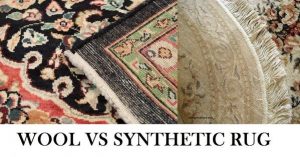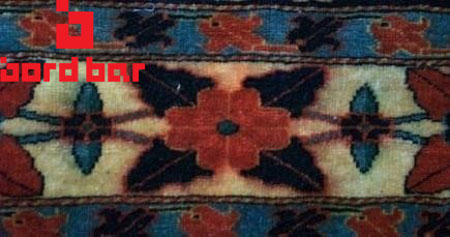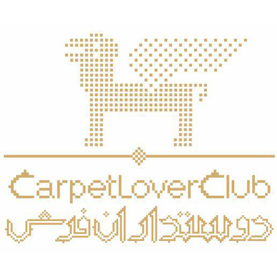how to select proper size of handmade carpet?
Measure the floor (or wall) space you are looking to cover, thinking about Minimum size and also a Maximum size for both the length and also the width; as every rug in store is unique it is important to allow tolerances in each direction. You may be limited to a very set size or might want to keep options open for anything from a rug for under a coffee table to a piece which will go underneath furniture. Bear in mind that generally the larger the rug the more expensive it will be.
important factors for asessing quality of persian handmade carpet
- Origin: the country, city, town or village where the rug is made. For example Esfahan, Kashan, Tabriz, Ardakan, Herisz and … .
- Craftsmanship: this is the skill of the individuals involved in making the rugs. For example creating a masterpiece would involve the best skilled individuals.
- KPSI: Rugs with a higher KPSI reflect the skill and devotion of the craftsman; with a higher KPSI more intricate and detailed patterns are achieved in the rug design.
- Design: this is the most important feature of a rug; for an inexperience it is not obvious make out, in fact just like other type of art. Different people have different tastes; however, there are rugs which instantly appeal to most whilst other rugs tend to grow on you with time.
- Colours: Natural versus chemical dyes, used for colouring the wool/silk fabrics. Natural dyes are more appealing to the eye and are colour fast; furthermore they fade to a pretty muted shade of original colour, if exposed to strong and prolonged sunlight. Older and antique rugs are mostly natural dye productions. Three to four is the ideal number of colours in a rug; subtle variations in colour shades are nice (natural dyes).
- Fabrics: A rug piles are knotted in wool, silk or mixture of both fabrics; cotton is commonly used as the foundation (wrap and weft), however wool foundation rugs are common amongst tribal rugs, while extra fine rugs are mostly silk based.
- Condition: Some of most priceless rugs around the world museums are in pieces and are well worn. It is not suggested you choose such carpets, because it is not practical and you are not an expert/collector. A good condition rug should be straight, have no colour mixes, no low piles, clean, healthy looking fringes and edges.
- Size: size of a rug is proportionate to its value when comparing the price for exactly the same quality and origin etc. Larger sized rugs tend to be better investments as well as being a more luxurious.
- Age: Older Persian and Oriental rugs are an excellent investment and quality if in good condition and purchased at the right price due to their uniqueness as well as their superior attributes.
7 Signs Your Oriental Rug is Fake
Rug that has a Hard Plastic Back

An authentic hand knotted Persian rug will always feature a soft backing whose pattern matches the top pile exactly like a mirror image. If the back is not a mirror image of the front, the rug is not an authentically hand knotted Persian rug. When the back of the rug is hard plastic, this mean that your rugs top pile is made from a synthetic material and the hard plastic back is holding the rug together. It is a little hard to see in a picture but on the left is a hand knotted wool rug. The hand knotted rug is soft on both the top and the bottom and the back is an exact mirror image of the front. On the right is a synthetic rug. The back is hard to the touch and the fringe is sewn on. Popular materials used in synthetic rugs:
- Polypropylene
- Nylon
- Acrylic
- Polyester
These materials are budget-friendly, but they do not last as long as wool rugs. A synthetic rug is meant to be aesthetically pleasing for a short amount of time.
How to Test a Real Silk Persian Rug
Rub it
Old rug retailers claim that you can tell artificial silk from real silk by rubbing the pile with your open palm. You need to do so vigorously and see how it feels. The real Persian silk rug will feel warm to the touch while the artificial one will remain cool.
Burn it
Burn a small piece of the fringe (clip it off, first). If it smells like burning hair and the ash is flaky and blackened, it is a strong indication that the rug is real silk. If you smell something very close to burning a paper and the ask I powdery and smooth, then your material is artificial.
The Colors are Bleeding
Authentic oriental rugs should only be dyed with all natural vegetable dyes. When the practice of hand knotting Persian rugs began, centuries ago. Chemical dyes were not invented! If you not only want a beautiful piece, but also want the experience of owning a piece that is rooted in history and royalty, vegetable dyes are the only way to go. Never purchase a rug that was washed with a fugitive dye. Spilling anything water or oil based will result in a bleeding dye mess on your carpet below, Hard wood flooring And clothing.

Anything porous could be ruined from the stain of a fugitive dye bleeding. This intense bleeding results from a short cut in the dying process. The rug was not properly rinsed after the dying process leaving the dyes fugitive. All RugKnots rugs are not only rinsed, but hand washed. This ensures that your rug will never bleed, and that the rug is as soft and plush as possible. Believe it or not, the main contributor to the rugs softness is how the rug was washed. Of course, hand washing is the most effective.
The Fringe is Sewn or Glued On

The fringe on a hand knotted oriental rug not only is a design element, it is a structural element. When the rug is being hand knotted, the fringe is the first element on the loom. The decorative knots are then tied around the structural fringe. The fringe is a part of what is holding the rug together. Because the fringe is so paramount to a hand knotted oriental rug, rug dealers add fake fringe to a rug to make it appear hand knotted. This an especially common practice on hand tufted rugs. If you flip the rug on its back, you’ll see that the fringe is either glued on, or that it’s sewn on. This is one of the easiest ways to determine if your oriental rug is fake. You can see on the image above that the tufted rug’s fringe is clearly sewn on.




